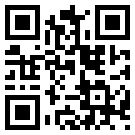Press Releases
EU FP7 enables scientists from 10 nations to test NASA Common Research Model at ETW

Adjusting PIV (Particle Image Velocimetry) for testing the NASA CRM at ETW. Hi-Res [9.9MB]. Photo: © DLR.
From 24 to 28 February 2014 more than 40 international aerodynamic specialists from various European institutions, US NASA, Russian TsAGI and Japanese JAXA will meet in Cologne, Germany, to attend the experimental test entry of the project "Time-resolved Wake measurement of Separated Wing Flow & Wall Interference Investigations".
The project, which was selected in the course of the EU funded FP7 ESWIRP programme, will perform world-wide unique unsteady measurements of the wake flow field by time-resolved PIV (Particle Image Velocimetry) and unsteady deformation measurements for a cruise aircraft configuration at real-flight Reynolds and Mach numbers. The study is needed to further the understanding of the occurring phenomena and the validation of CFD codes (Computational Fluid Dynamics). In close cooperation with a team of NASA engineers the tests will be conducted at cryogenic conditions, using the NASA Common Research Model (CRM).
The results of this scientific test are expected to give valuable insights in the development and downstream propagation of wing wake flows as well as the resulting effects on the empennage. These scenarios are of high interest to the international aircraft industry due to the potentially heavy unsteadiness of separated wing flow at the borders of the flight regime that may cause an excitation of the empennage.
All test attendants will meet for a Welcome Dinner on the evening before the official start of the test on Monday 24 February 2014. Three students from Germany, Italy and the Czech Republic complement the international research project team as observers. They had applied successfully for the participation in this test entry in the course of a call among European universities initiated by the European idea of enhancing international and interdisciplinary competences early on in the academic formation.
"After months of close cooperation within our international consortium and careful preparation of technical details with the experienced ETW team, I am really looking forward to the start of this test entry. For many of us it is the first opportunity to prepare and attend a test in such a high scale research facility." said Dr. Thorsten Lutz, University of Stuttgart, assistant to the project team leader .
You may find a related press release in German at the DLR website.

NASA Common Research Model at ETW. Hi-Res [3.5MB].
Photo: © ETW.

NASA Common Research Model during rigging for the ESWIRP test at ETW.
Photo: © ETW.
This work receives funding from the European Union FP7/2007-2013 under grant agreement no 227816.
Background
ETW - Pushes the Limits
Wind tunnels, using scaled down aircraft models, are the major source of aerodynamic design data for new aircraft projects. Wind tunnels are indispensable tools for aerodynamic research and aircraft development; they complement and validate flow simulation methods on the most powerful computers.
ETW, the European Transonic Wind Tunnel, was designed and constructed by the four European countries France, Germany, United Kingdom and The Netherlands. It is operated based on a non-profit policy by the ETW GmbH, founded in 1988. Its location in Cologne, Germany, is right in the middle of Europe.
European researchers and engineers harness ETW’s capabilities for advancing aeronautical science into aircraft innovation by accessing real-flight conditions in this cutting edge ground-test laboratory.
ETW is the worldwide leading wind tunnel for testing aircraft at real flight conditions. Aircraft performance and their flight envelope limits can be accurately determined with unique quality at ETW long before flight testing of a first prototype. This enables significant reductions in the technical and economic risks associated with the development of new aircraft. Manufacturers from all over the world take advantage of the exceptional features of this high-tech facility enhancing the performance, economic viability, and environmental friendliness of their future aircraft.
ETW – Erweitert Horizonte
Aerodynamische Entwurfsdaten für neue Flugzeugprojekte werden zu einem großen Teil aus Windkanaluntersuchungen an maßstäblich verkleinerten Flugzeugmodellen gewonnen. Windkanäle sind unverzichtbare Werkzeuge sowohl für die Strömungsforschung als auch für die Flugzeugentwicklung; sie ergänzen und validieren Verfahren zur Strömungssimulation auf modernsten Hochleistungsrechnern.
Der Europäische Transschall-Windkanal ETW ist eine transnationale Forschungseinrichtung in Köln. Er wurde von den vier Staaten Frankreich, Deutschland, Großbritannien und den Niederlanden entwickelt und gebaut. Betrieben wird er von der ETW GmbH, die als eigenständiges Non-Profit-Unternehmen 1988 gegründet wurde.
Der ETW erlaubt europäischen Forschenden und Ingenieur:innen, tatsächliche Flugzustände unter Laborbedingungen am Boden darzustellen, um wissenschaftliche Erkenntnisse zu erarbeiten und in Luftfahrtinnovationen zu überführen.
Der ETW ist der weltweit führende Windkanal, in dem Luftfahrzeuge unter wirklichkeitsgetreuen Flugbedingungen getestet werden können. Lange bevor der erste Prototyp für einen Flugtest zur Verfügung steht, können im ETW die Leistungsfähigkeit und die Flugbereichsgrenzen eines Neuentwurfs genauestens und mit einzigartiger Qualität bestimmt werden. Dies reduziert erheblich die technischen und wirtschaftlichen Risiken, die mit der Entwicklung neuer Luftfahrzeuge verbunden sind. Hersteller aus aller Welt nutzen die außergewöhnlichen Möglichkeiten dieser Hightech-Einrichtung, um die Leistungsfähigkeit, die Wirtschaftlichkeit und die Umweltfreundlichkeit ihrer zukünftigen Produkte nachhaltig zu verbessern.



